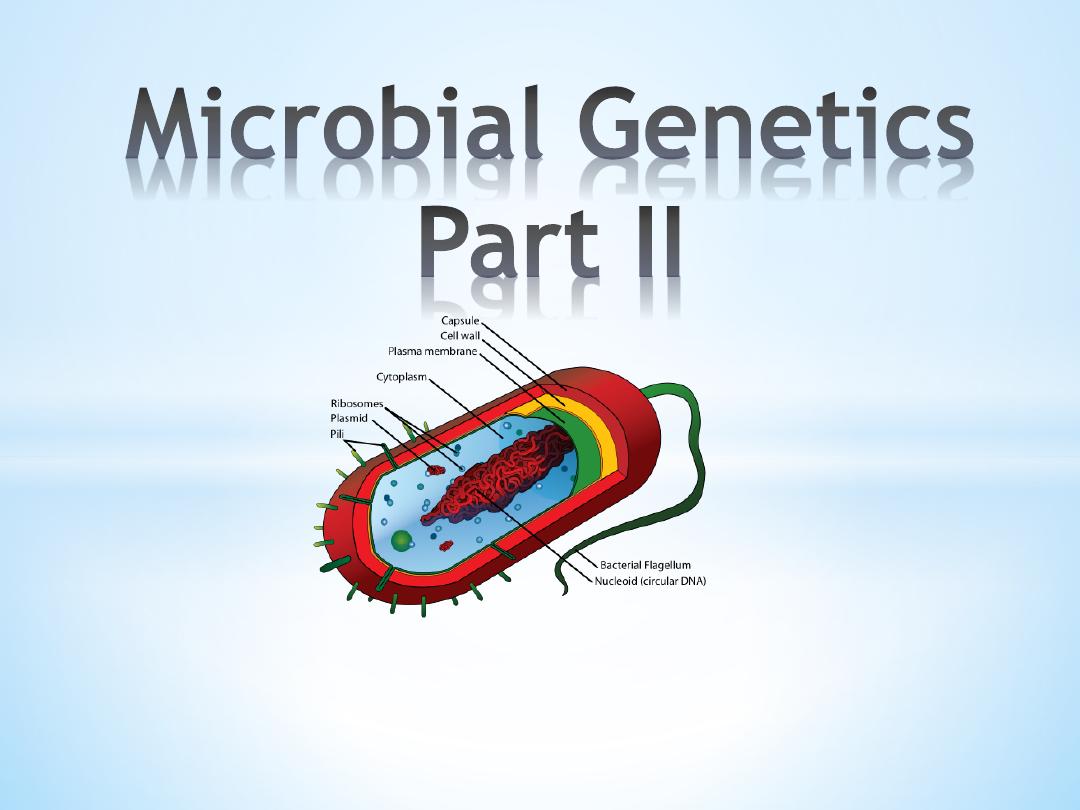
Dr.Ahmed Rushdi
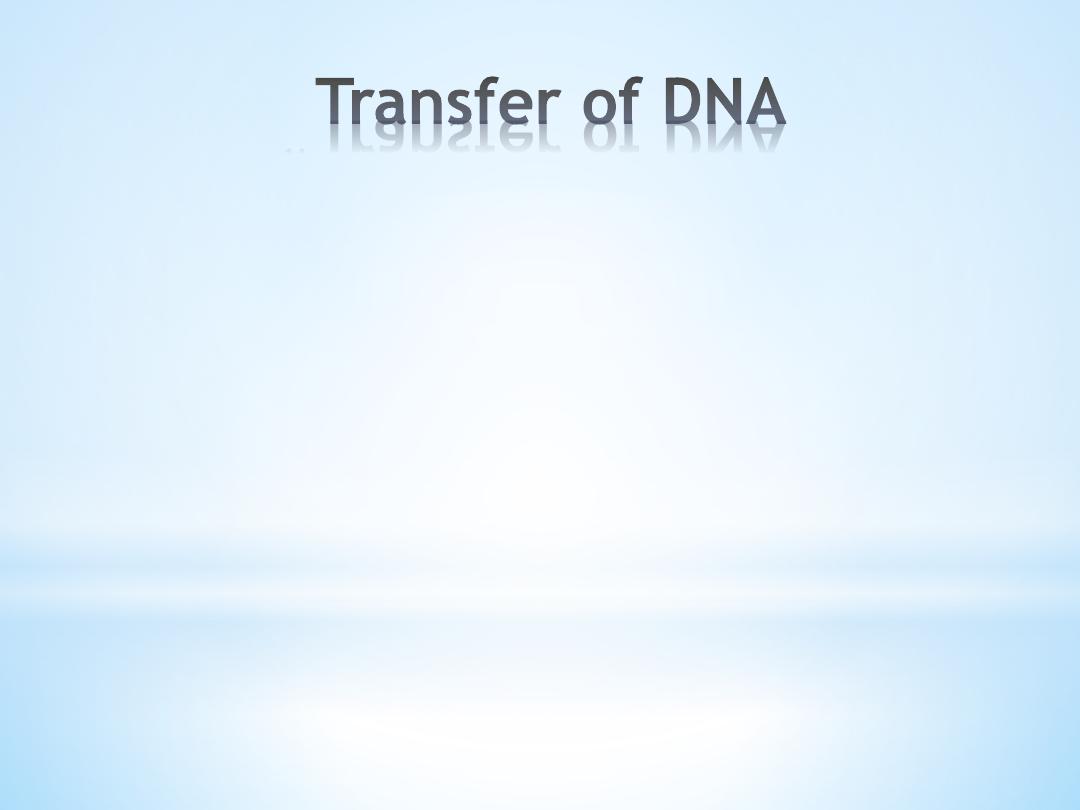
*
*
The haploid nature of the bacterial
genome might be presumed to limit the
genomic plasticity of a bacterium.
*
However, the ubiquity of diverse bacteria
in the environment provides a fertile gene
pool that contributes to their remarkable
genetic diversity through mechanisms of
genetic exchange.
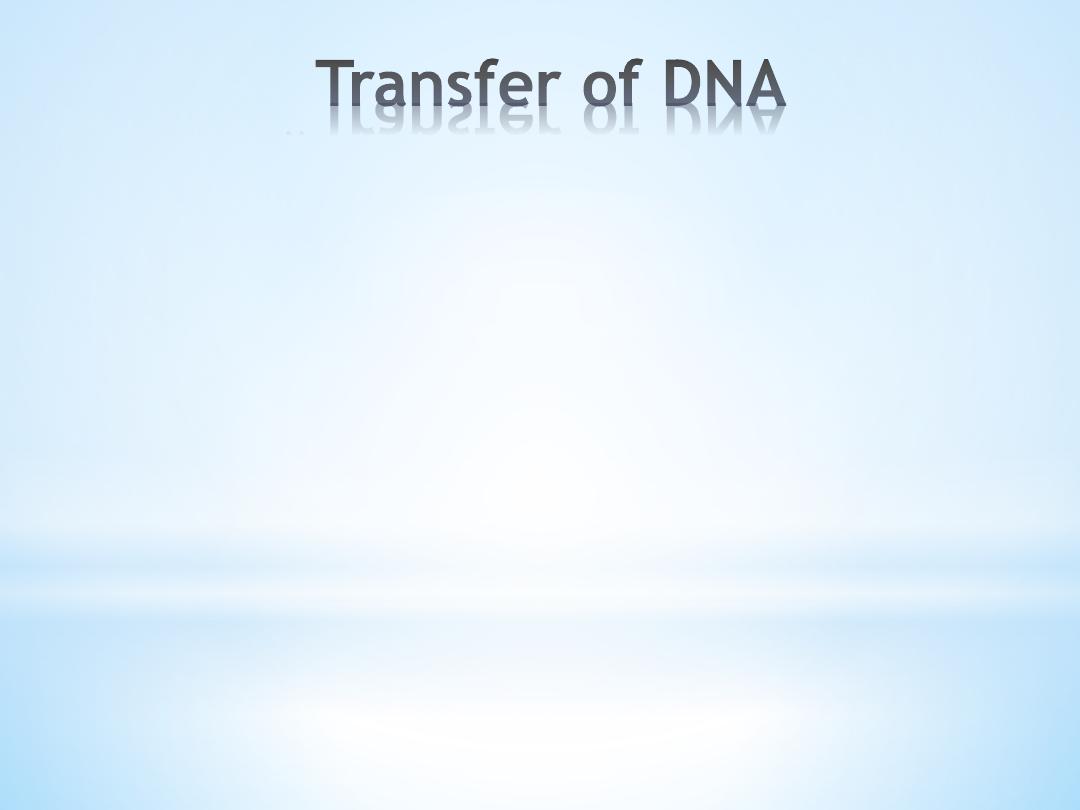
*
*
Bacterial genetic exchange is typified by transfer of
a relatively small fragment of a donor genome to a
recipient cell followed by genetic recombination.
*
Bacterial genetic recombination is quite unlike the
fusion of gametes observed with eukaryotes; it
demands that this donor DNA be replicated in the
recombinant organism.
*
Replication can be achieved either by integration of
the donor DNA into the recipient's chromosome or by
establishment of donor DNA as an independent
replicon.
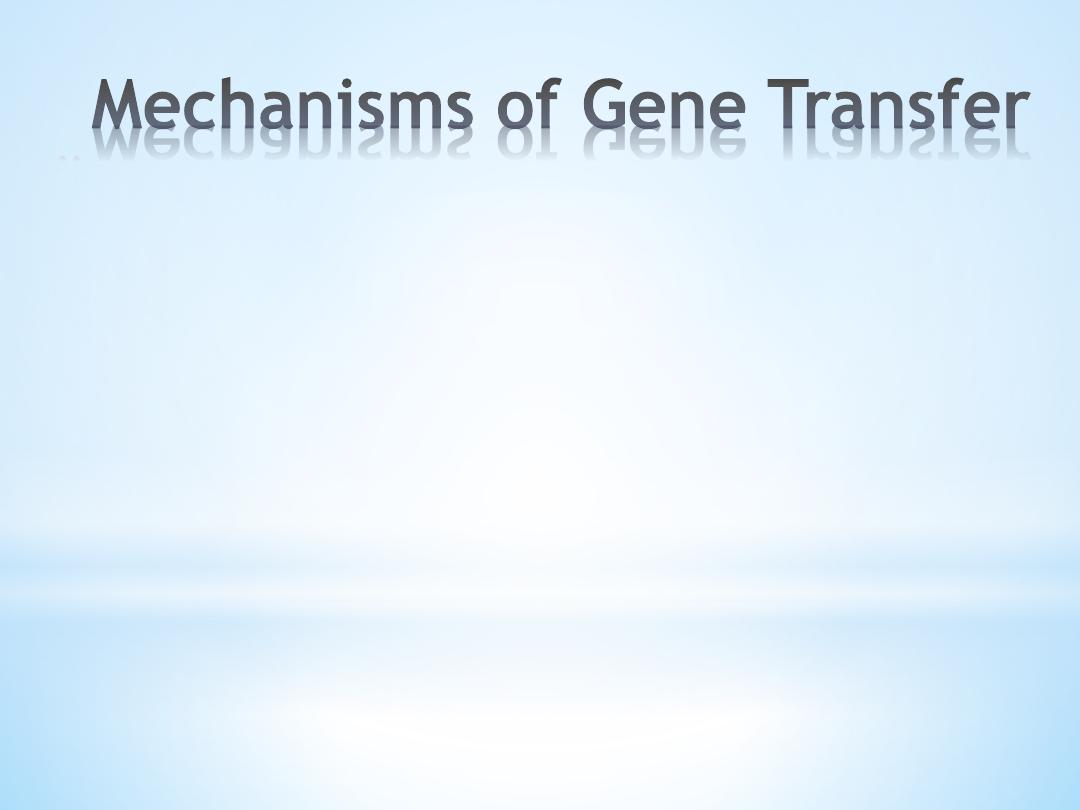
*
*
The DNA composition of microorganisms can be
remarkably fluid.
*
DNA can be transferred from one organism to another, and
that DNA can be stably incorporated in the recipient,
permanently changing its genetic composition.
*
This process is called
lateral
or
horizontal
gene transfer
to differentiate it from the inheritance of parental genes,
a process called
vertical
inheritance.
*
Three broad mechanisms mediate efficient movement of
DNA between
cells—
conjugation
,
transduction
, and
transformation.
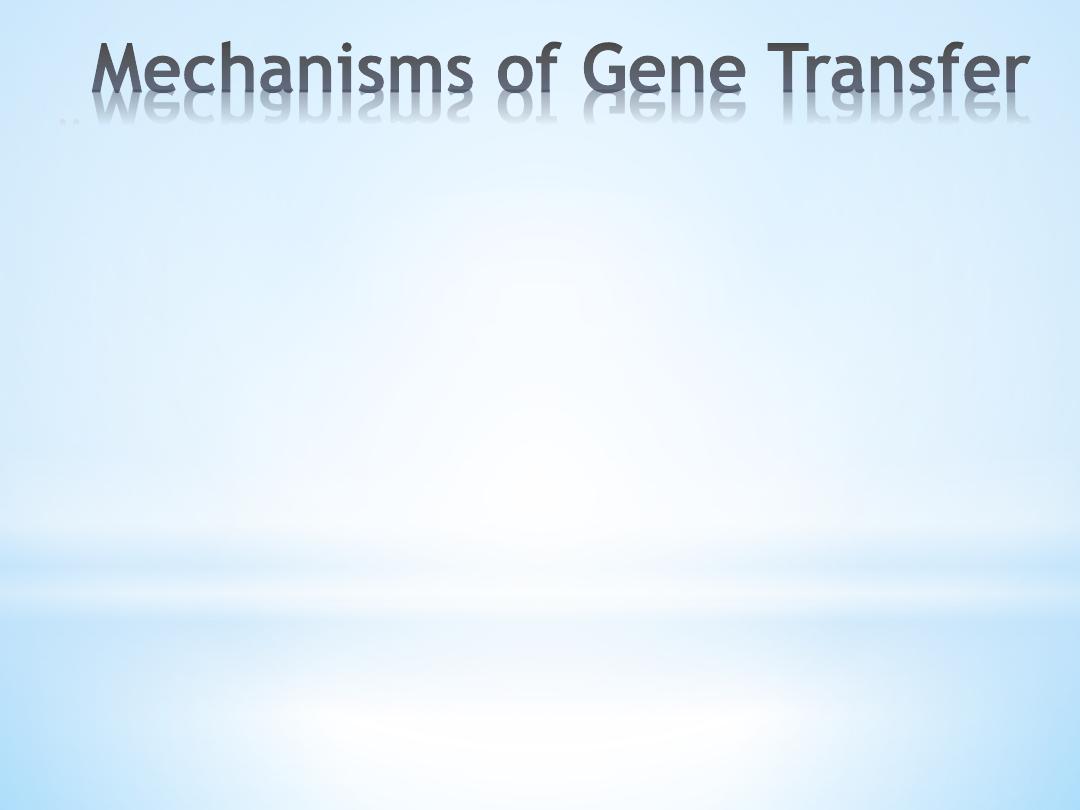
*
*
Conjugation
requires donor cell-to-recipient cell contact to transfer only
one strand of DNA .
*
The recipient completes the structure of double-stranded DNA by
synthesizing the strand that complements the strand acquired from the
donor.
*
In transduction
, donor DNA is carried in a phage coat and is transferred into
the recipient by the mechanism used for phage infection.
*
Transformation
, the direct uptake of "naked" donor DNA by the recipient
cell, may be natural or forced.
*
Relatively few bacterial species are naturally competent for transformation;
these species assimilate donor DNA in linear form. Forced transformation is
induced in the laboratory, where, after treatment with high salt and
temperature shock, many bacteria are rendered competent for the uptake
of extracellular plasmids.
*
The capacity to force bacteria to incorporate extracellular plasmids by
transformation is fundamental to genetic engineering.
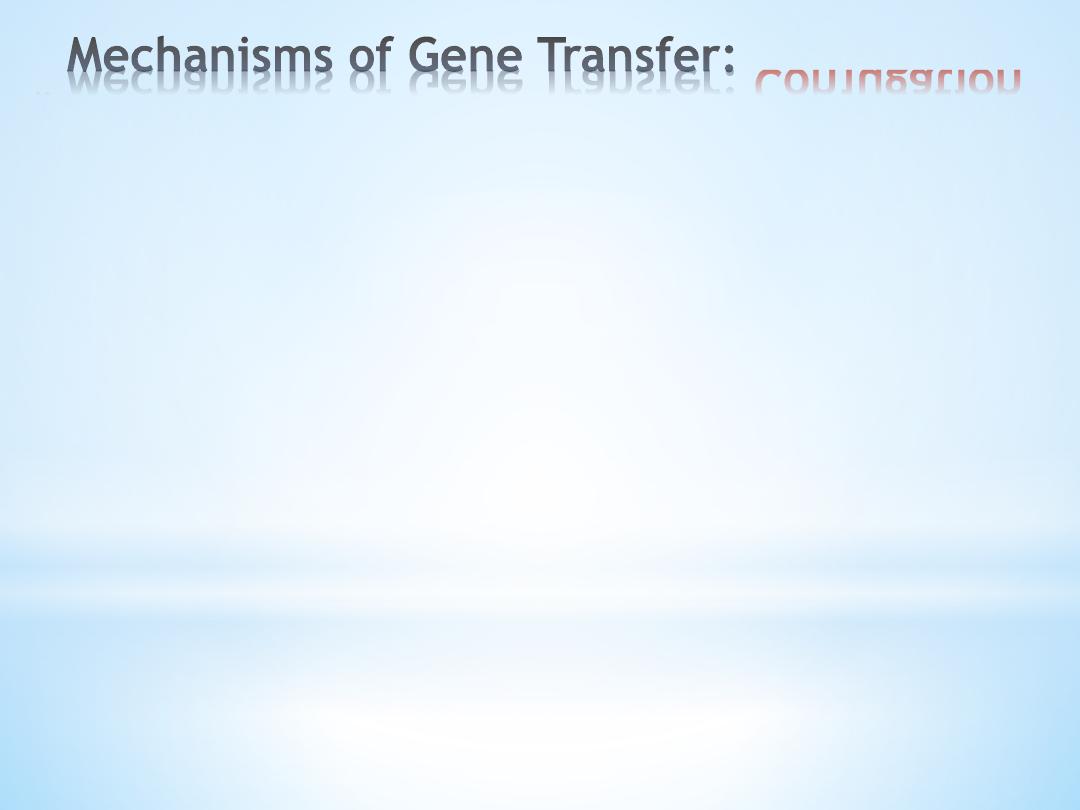
*
Conjugation
*
Plasmids are the genetic elements most frequently transferred
by conjugation.
*
Genetic functions required for transfer are encoded by the tra
genes, which are carried by self-transmissible
plasmids
.
*
Some self-transmissible plasmids can mobilize other plasmids
or portions of the chromosome for transfer. In some cases
mobilization is achieved because the tra genes provide
functions necessary for transfer of an otherwise
nontransmissible plasmid .
*
In other cases, the self-transmissible plasmid integrates with
the DNA of another replicon and, as an extension of itself,
carries a strand of this DNA into a recipient cell.
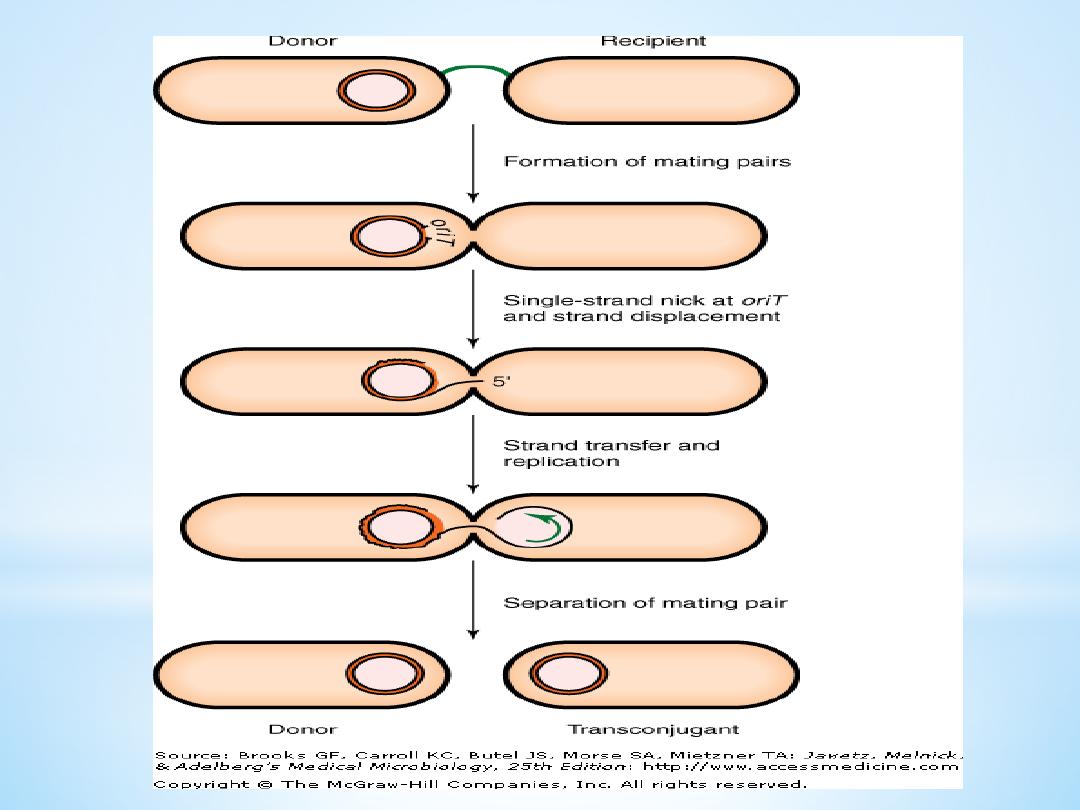
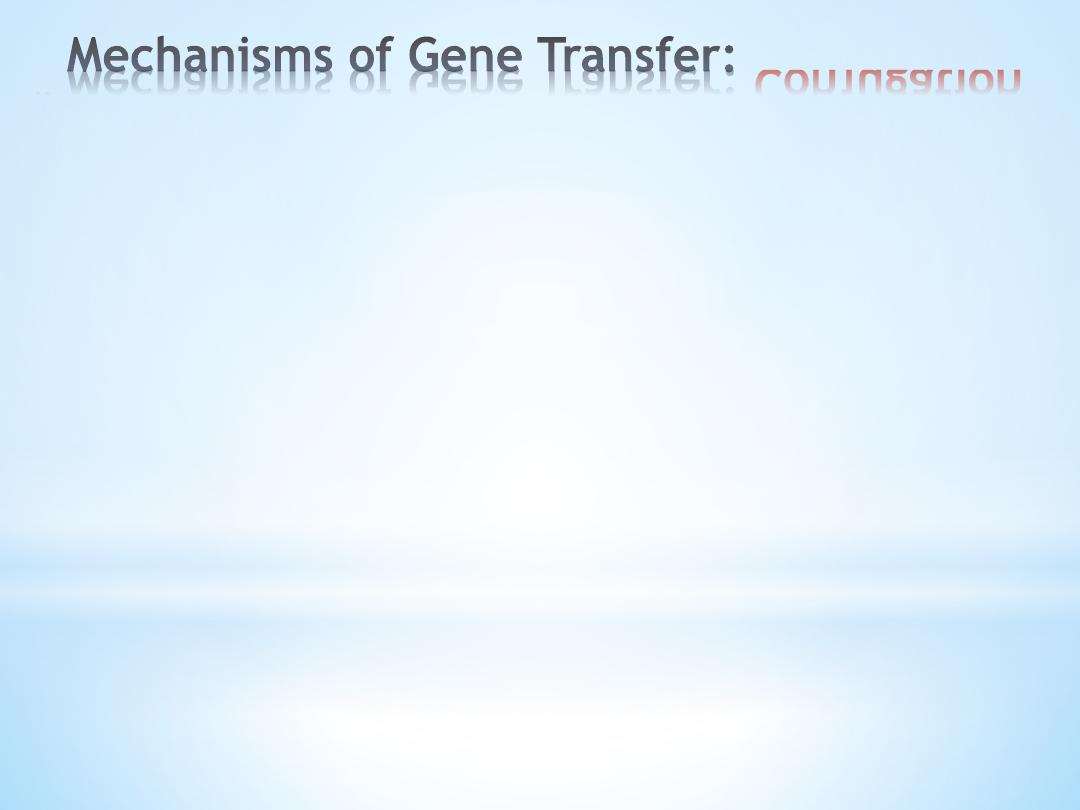
*
Conjugation
*
Genetic analysis of
E coli
was greatly advanced by elucidation of
fertility factors carried on a plasmid designated F
+
.
*
This plasmid confers certain donor characteristics upon cells; these
characteristics include a sex pilus, an extracellular multimeric
protein extrusion that attaches donor cells to recipient organisms
lacking the fertility factor.
*
A bridge between the cells allows a strand of the F
+
plasmid,
synthesized by the donor, to pass into the recipient, where the
complementary strand of DNA is formed.
*
The F
+
fertility factor can integrate into numerous loci in the
chromosome of donor cells.
*
The integrated fertility factor creates high frequency recombination
(HFR) donors from which chromosomal DNA is transferred (from the
site of insertion) in a direction determined by the orientation of
insertion
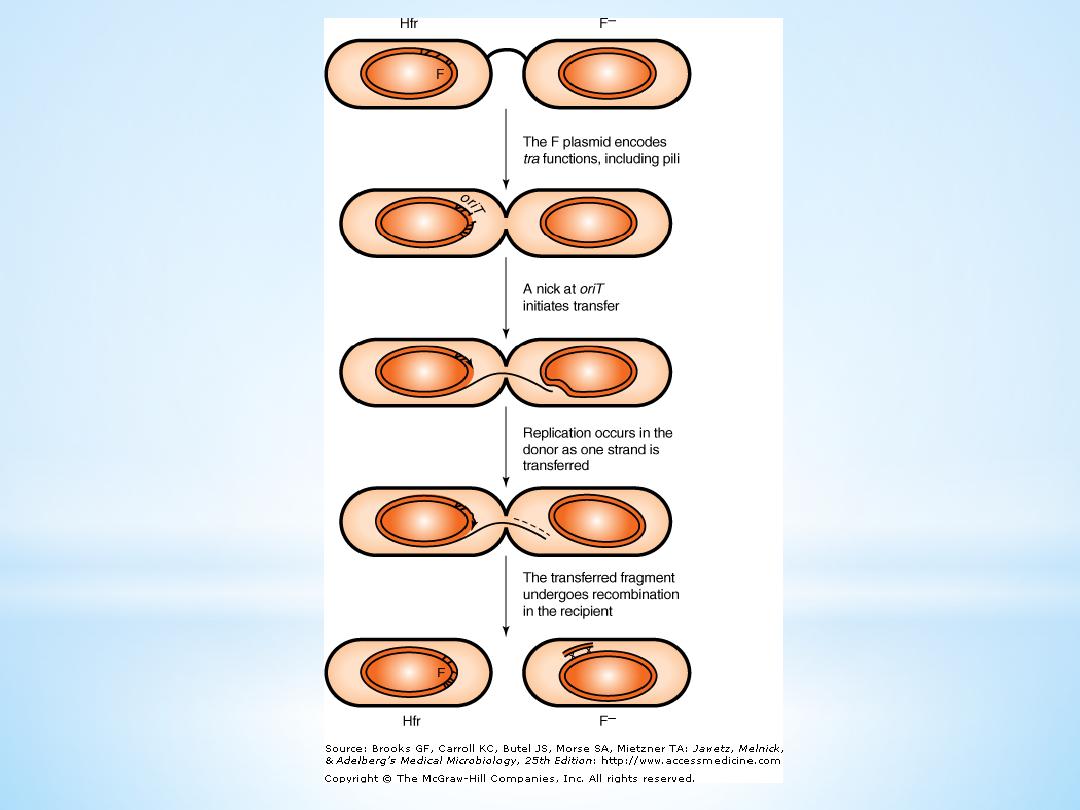
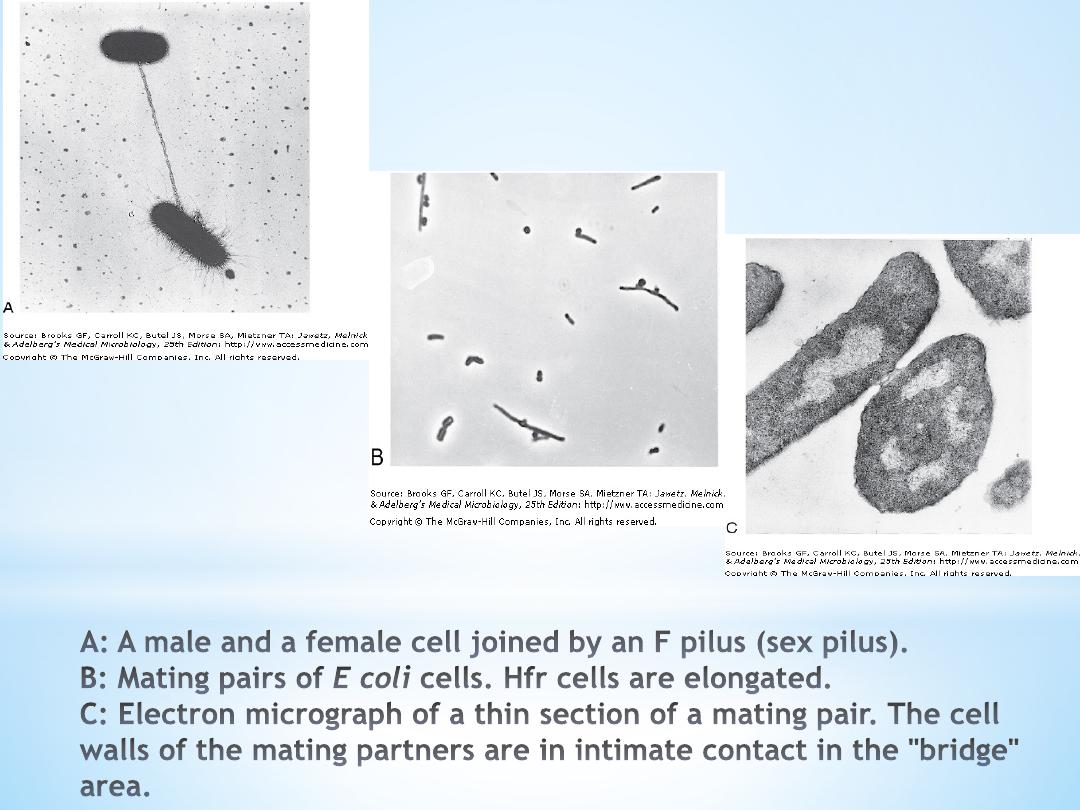
*
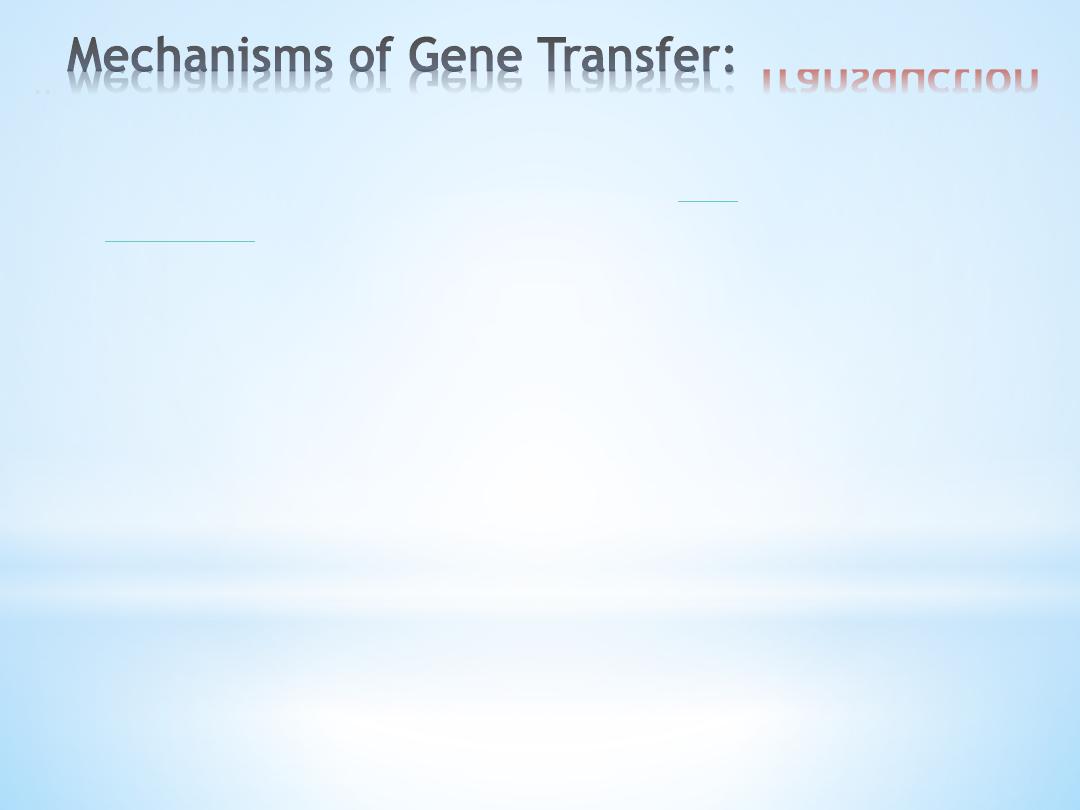
*
Transduction
*
Transduction is the process by which
DNA
is transferred from
one
bacterium
to another by a Such populations have been used to
transfer genes from one bacterium to another.
*
Temperate phages are preferred vehicles for gene transfer because
infection of recipient bacteria under conditions that favor lysogeny
minimizes cell lysis and thus favors survival of recombinant strains.
*
Indeed, a recipient bacterium carrying an appropriate prophage may
form a repressor that renders the cell immune to lytic infection;
such cells may still take up bacterial DNA from transducing particles.
*
Transducing mixtures carrying donor DNA can be prepared under
conditions that favor the lytic phage cycle.
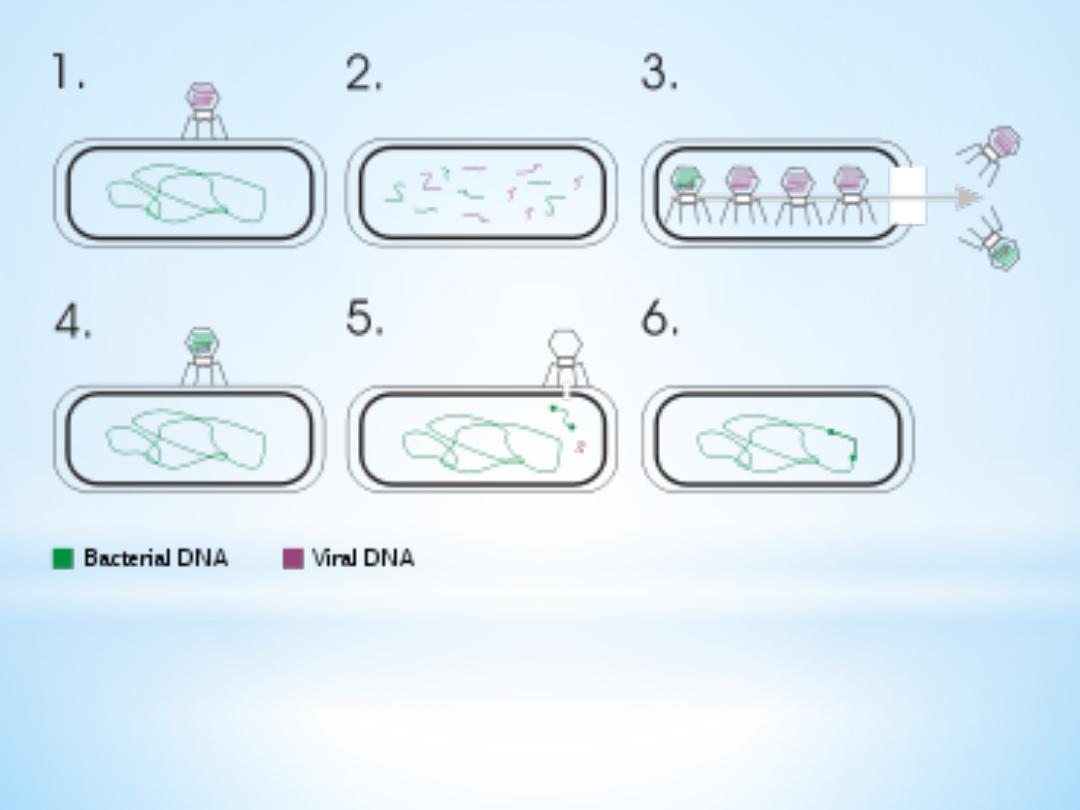
Pathogenicity islands are often transported by phages. For example, two phages
transport pathogenicity islands responsible for converting a benign form of Vibrio
cholerae into the pathogenic form responsible for epidemic cholera These phage
encode genes for cholera toxin and bundle forming pili which function in
attachment.
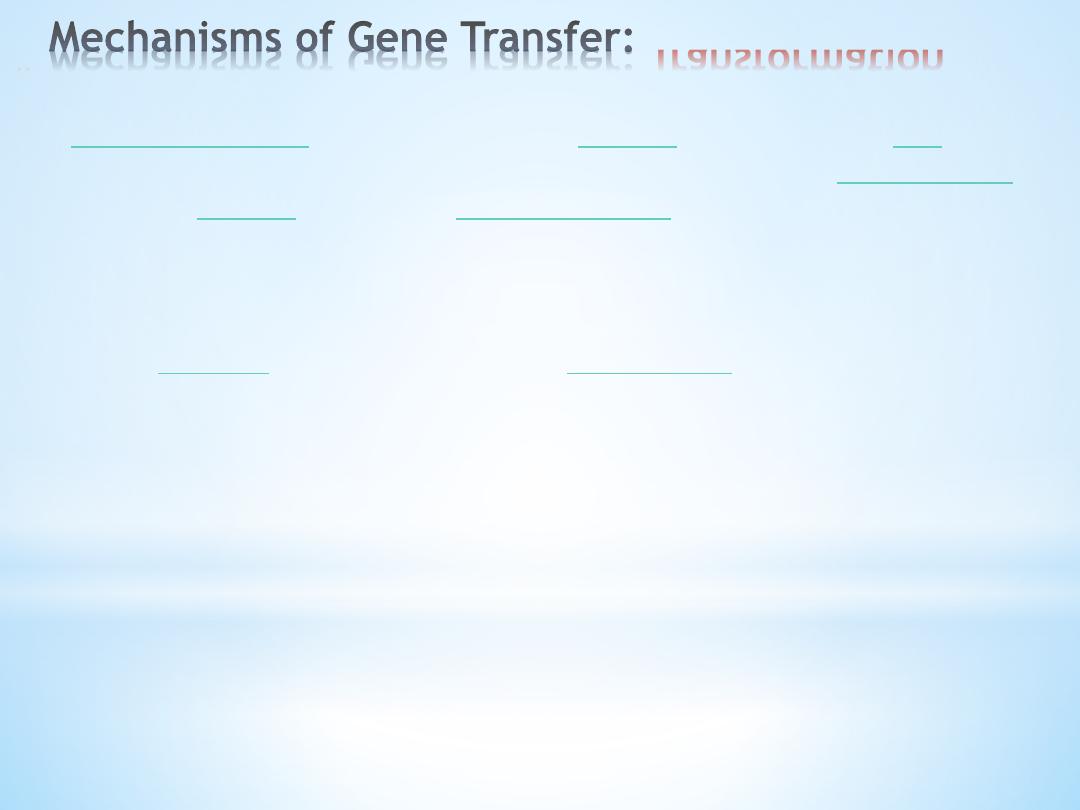
*
Transformation
*
In
molecular biology
,
transformation
is
genetic
alteration of a
cell
resulting
f r o m t h e d i r e c t u p t a k e , i n c o r p o r a t i o n a n d
e x p r e s s i o n
o f
exogenous
genetic
material (
exogenous DNA
) from its surroundings and
taken up through the cell membrane(s).
*
Transformation occurs naturally in some species of bacteria, but it can also
be effected by artificial means in other cells. For transformation to
happen,
bacteria
must be in a state of
competence
, which might occur as a
time-limited response to environmental conditions such as starvation and
cell density.
*
Naturally competent transformable bacteria are found in several genera
and include
Bacillus
subtilis, Haemophilus influenzae, Neisseria
gonorrhoeae, Neisseria meningitidis, and Streptococcus pneumoniae.
*
DNA fragments containing genes from such organisms can be readily
identified on the basis of their ability to transform mutant cells to the wild
type.
*
These techniques represent a substantial advance over the laborious
procedures used by Avery and his colleagues to demonstrate that the
pneumococcal transforming principle was DNA
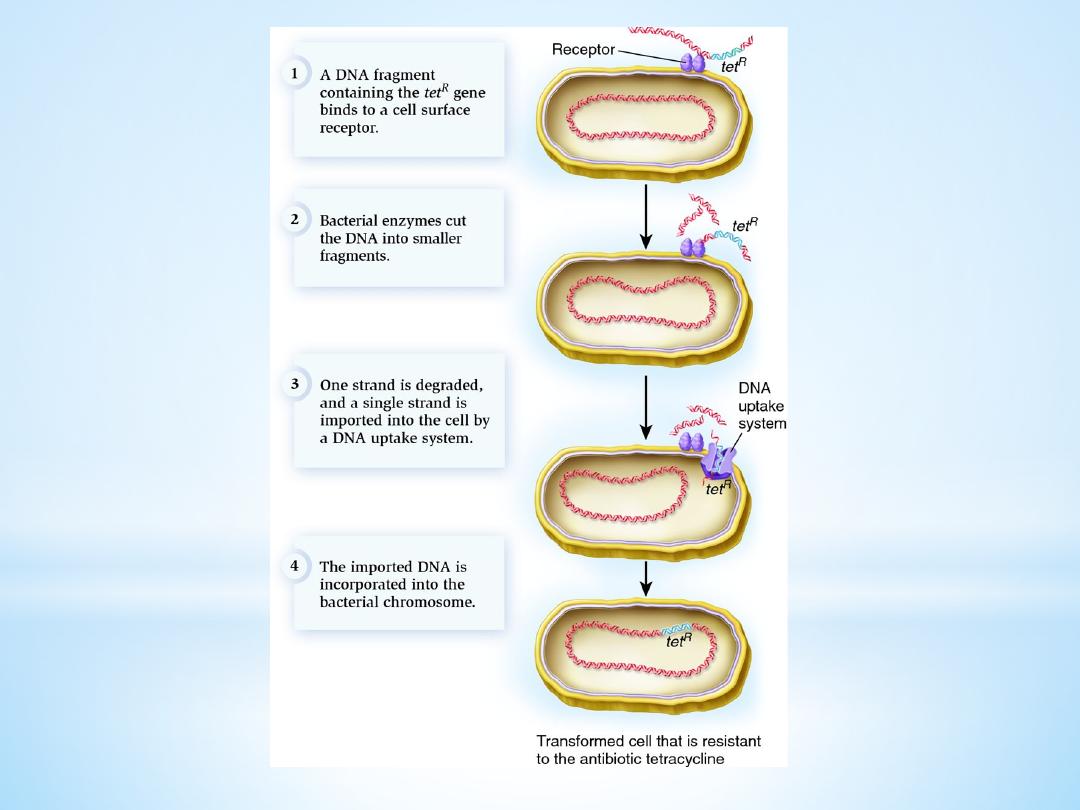
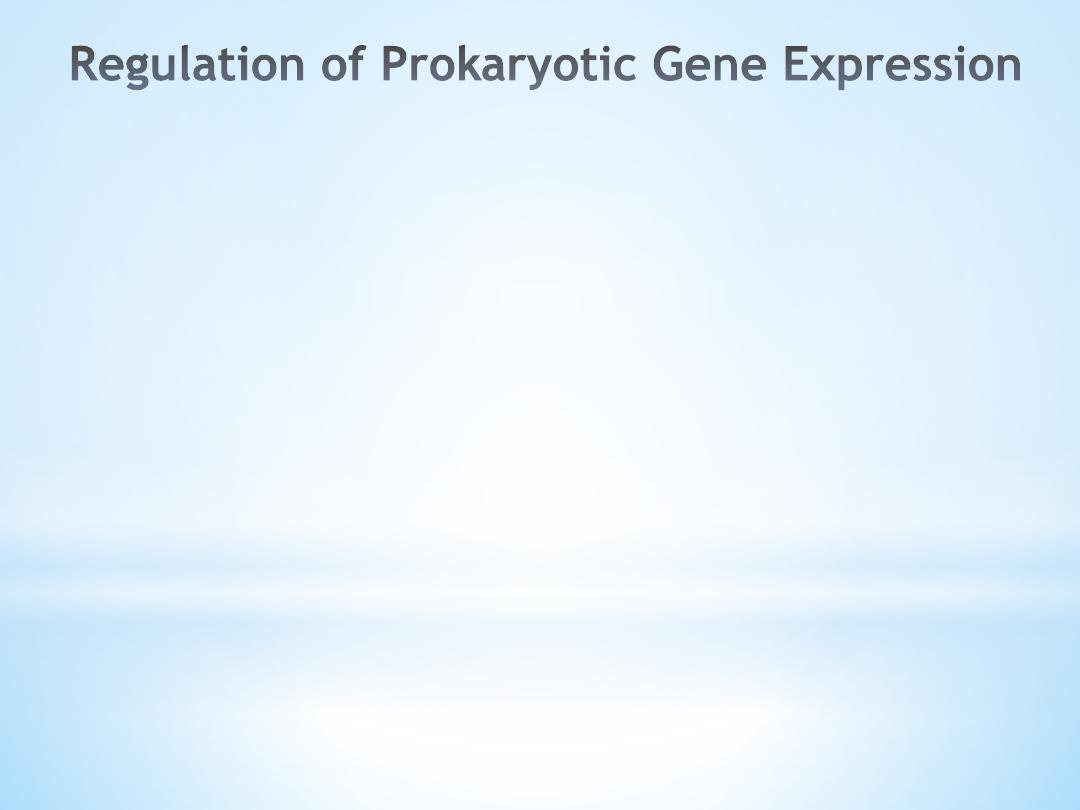
*
*
Specific proteins, the products of regulatory genes, govern
expression of structural genes that encode enzymes. Transcription
of DNA into mRNA begins at the promoter, the DNA sequence that
binds RNA polymerase.
*
The level of gene expression is determined in part by the ability of
a promoter to bind the polymerase, and the intrinsic effectiveness
of promoters differs widely.
*
Further controls over gene expression are exerted by regulatory
proteins that can bind to regions of DNA near promoters.
*
Many prokaryotic structural genes that encode a series of metabolic
reactions are clustered on operons.
*
This contiguous series of genes are expressed as a single mRNA
transcript, and expression of the transcript may be governed by a
single regulatory gene.
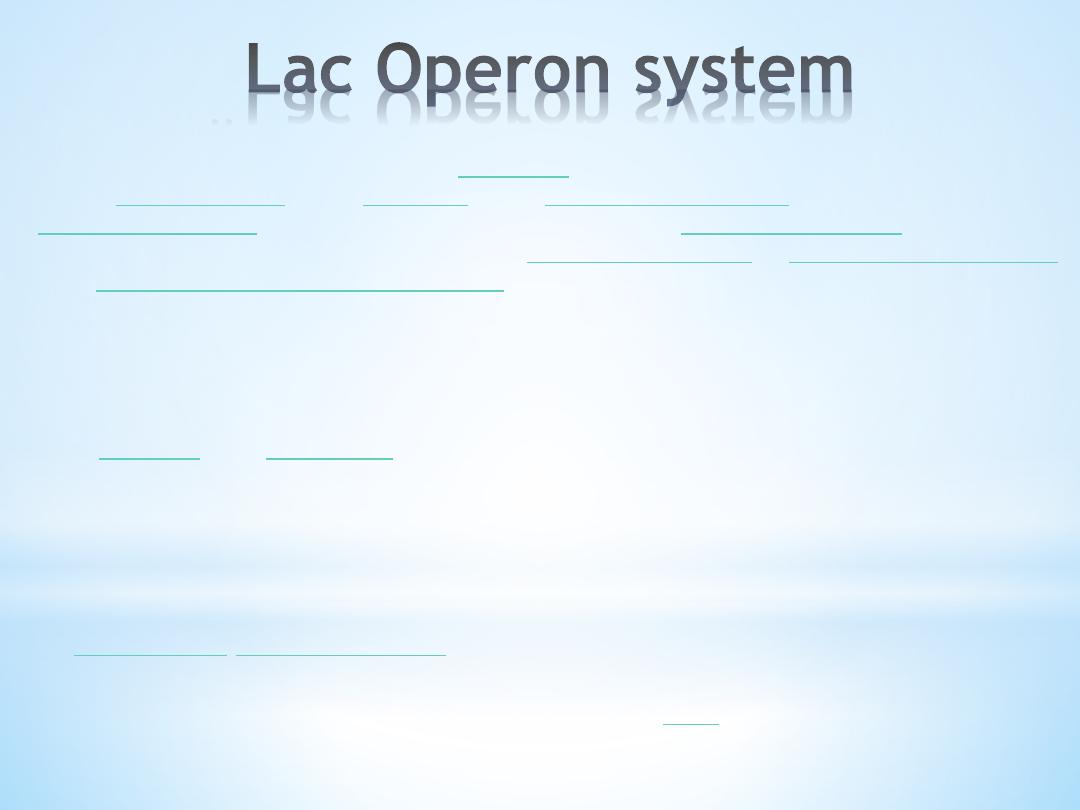
*
*
T h e
l a c o p e r o n
i s a n
o p e r o n
r e q u i r e d f o r t h e t r a n s p o r t
and
metabolism
of
lactose
in
Escherichia coli
and some other
enteric bacteria
. It consists of three adjacent
structural genes
, lacZ, lacY,
and lacA. The genes encode
β-galactosidase
,
lactose permease
,
and
thiogalactoside transacetylase
.
*
In its natural environment, the lac operon allows for the effective digestion
of lactose. The lactose permease, which sits in the cytoplasmic membrane,
transports lactose into the cell.
*
β-galactosidase, a cytoplasmic enzyme, subsequently cleaves lactose
into
glucose
and
galactose
.
*
However, it would be wasteful to produce the enzymes when there is no
lactose available or if there is a more preferable energy source available,
such as glucose.
*
Gene regulation of the lac operon was the first genetic regulatory
mechanism to be understood clearly and is one of the foremost examples
of
prokaryotic
gene regulation
.
*
The lac operon is one of the most basic methods for explanation of how a
repressor enzyme works within a cell on
DNA
and for that reason is
discussed in many introductory molecular and cellular biology classes at
universities.
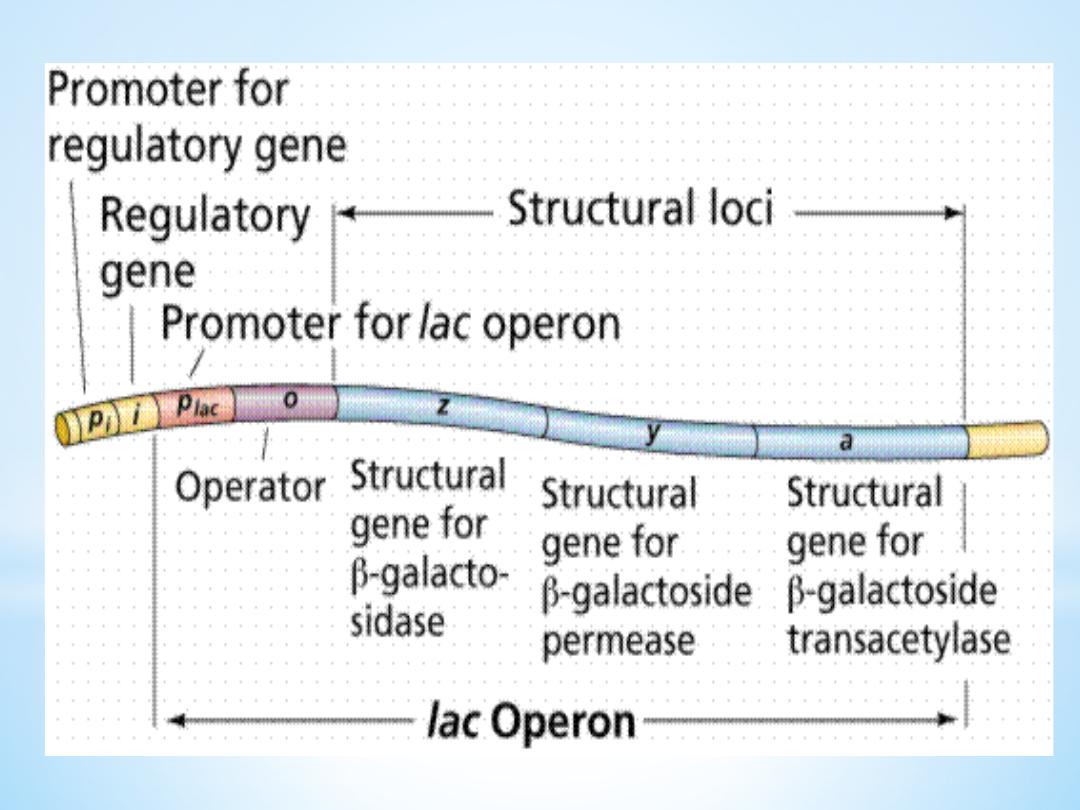

*
